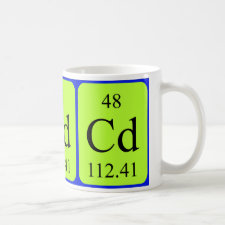
Authors: Jalilzadeh M, Uzun L, Senel S, Denizli A
Article Title: Specific heavy metal ion recovery with ion-imprinted cryogels.
Publication date: 2016
Journal: Journal of Applied Polymer Science
Volume: 133
Issue: (10)
Page numbers: ArticleNo43095.
DOI: 10.1002/app.43095
Abstract: In this study, the functional monomers, N-methacryloyl-l-aspartic acid and N-methacryloyl-l-cysteine were synthesized through a reaction between appropriate amino acids and methacryloyl chloride. Then, Pb(II) or Cd(II) ion-imprinted 2-hydroxyethyl methacrylate based cryogels were prepared by free radical polymerization method under partially frozen conditions. Following the characterization of matrices, adsorption of heavy metal ions was examined in batch mode from aqueous solution considering several parameters affecting the adsorption performance. The actual adsorption capacities were 44.5, 65.3, and 86.7 mg/g for Cd-1, Cd-2, and Cd-3 cryogels meanwhile those were 41.9, 86.3, and 122.7 mg/g for Pb-1, Pb-2, and Pb-3 cryogels, respectively at optimum pH: 5.5. By increasing temperature, adsorption capabilities of both cryogels were inhibited because of the electrostatic nature of coordinated covalent bonds and collapsing of coordination spheres. The adsorption process was very fast, the equilibrium adsorption was achieved in about 60 min, which was directly related to macroporous structure and interconnected flow-channels of cryogels. Kinetics and adsorption isotherms were also studied. Langmuir isotherms and pseudo-second order kinetic model were well suited to adsorption data, which also indicated that the process occurred without any diffusion restrictions or steric hindrances. Finally, the competitive adsorption studies were performed using multi-ion containing synthetic wastewater to show whether the cryogels developed are suitable for specific heavy metal recycling or not. © 2015 Wiley Periodicals, Inc. J. Appl. Polym. Sci. 2016, 133, 43095
Template and target information: lead ion, Pb(II), cadmium ion, Cd(II)
Author keywords: adsorption, functionalization of polymers, membranes, recyling, surfaces and interfaces



Join the Society for Molecular Imprinting

New items RSS feed
Sign-up for e-mail updates:
Choose between receiving an occasional newsletter or more frequent e-mail alerts.
Click here to go to the sign-up page.
Is your name elemental or peptidic? Enter your name and find out by clicking either of the buttons below!
Other products you may like:
 MIPdatabase
MIPdatabase









